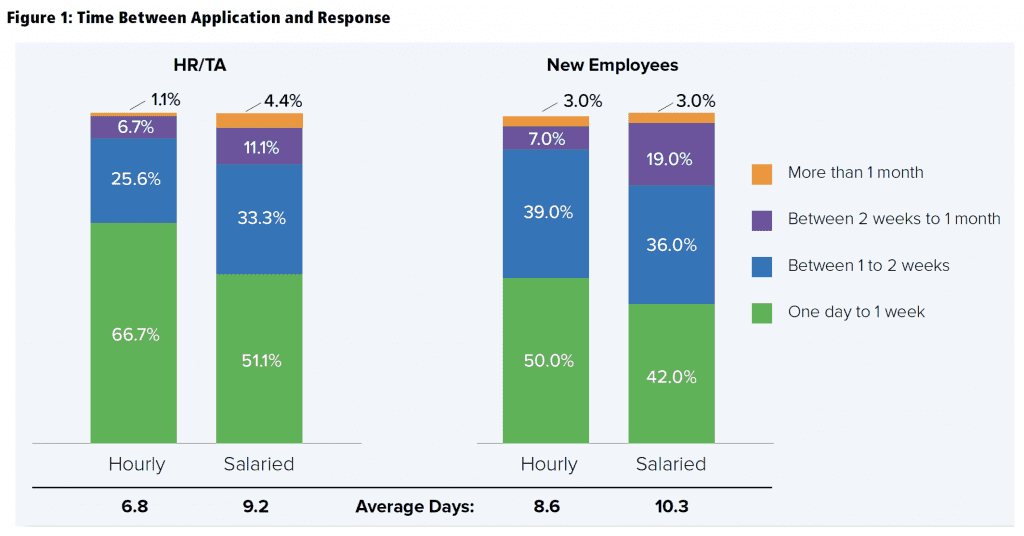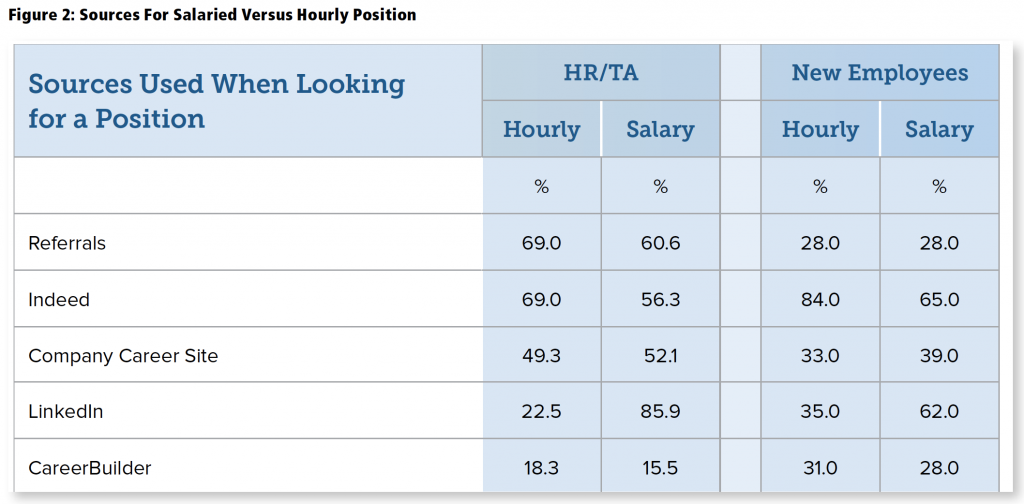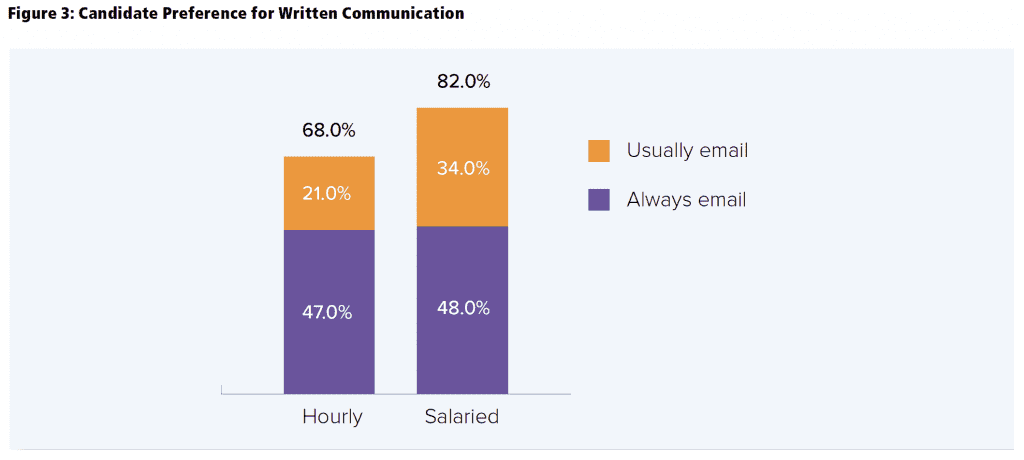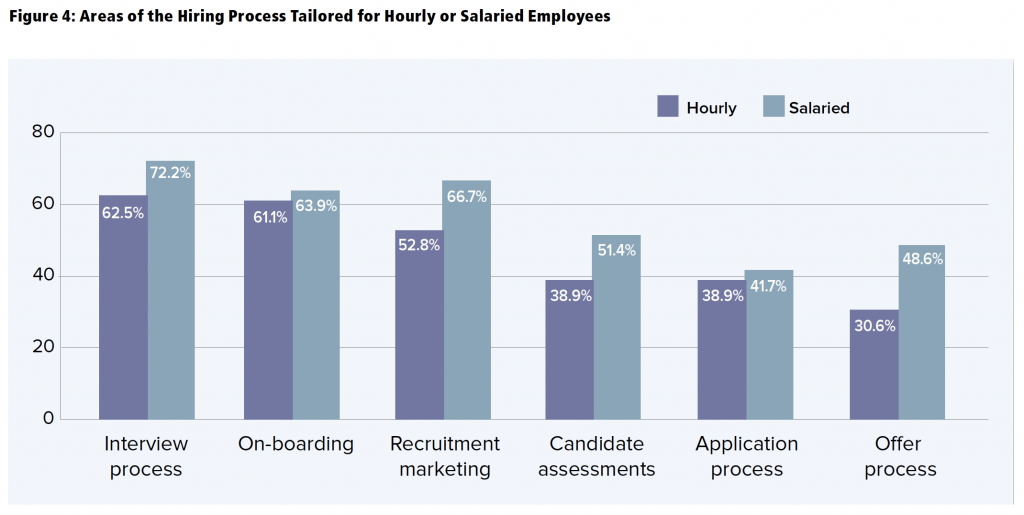New research shows the varying ways salaried and hourly employees are recruited and hired.
By Larry Basinait
Are there differences in which hourly and salaried positions are recruited? According to new research from HRO Today and Cielo, yes -and the differences are actually quite significant.
This may be due to the nature of hourly versus salaried positions. Typically, salaried workers tend to make a higher overall income than hourly workers. They also have greater access to benefits packages, bonuses, and paid time off. Full-time roles are typically at the executive or professional level and require advanced degrees. While organizations are often more cautious in contacting salaried candidates for new roles, they are more accommodating and flexible to meet their needs.
Despite competition for qualified candidates, recruiters take longer to respond to candidates’ applications for salaried roles than hourly roles, with the research showing an average response time of 8.6 days versus 6.8 days, respectively (see Figure 1). Recently hired employees perceive that it takes even longer to hear back from recruiters, with those applying for salaried roles indicating the longest response time. The average response time for hourly employees getting a job offer was 20.0 days, compared to 27.5 days for salaried employees.
Interviewing may be a factor for the delay. The research shows that there are nearly twice as many interviews conducted per candidate for salaried positions than for hourly positions, and recruiters use a greater variety of methods for interviewing candidates for salaried positions.
Overall, recruiters indicated that the most effective sources to find candidates for both hourly and salaried positions were Indeed and referrals (see Figure 2). LinkedIn is by far the most commonly used source when seeking out salaried employees (85.9 percent), but much less common for hourly employees (22.5 percent).
Except for a minority of hourly employees that use LinkedIn, these patterns also hold true for candidates seeking new positions.
Nearly two-thirds (64.4 percent) of the time, recruiters communicate with candidates for hourly positions usually or always using email (see Figure 3). The use of email is even higher for candidates for salaried positions, clocking in at 81.1 percent of the time. Sixty-eight percent of hourly employees and 82.0 percent of salaried employees prefer email communication during the interview process despite the widespread use of text messaging.
HR and talent acquisition practitioners are quite clear that the use of artificial intelligence (AI)-enabled technology must be disclosed to candidates. About three-quarters of recruiters indicated that it is important to reveal that AI technology is being used in a candidate interaction for both hourly and salaried positions.
Recruiter opinions about why salaried employees accept a role were more focused compared to hourly workers. For example, recruiters believe potential for growth (69.4 percent), company culture (59.7 percent), and company reputation (52.8 percent) are the primary drivers for accepting a position. Recently hired salaried employees agreed that potential for growth was most often a main reason for accepting a position, but compensation and location also remain factors.
Throughout the hiring process, from interviewing and offer management to onboarding, more customization was applied to salaried roles than hourly, with a significant difference in most surveyed areas (see Figure 4). The interview process and recruitment marketing were most often adapted for salaried workers.
Click here to view the entire report, sponsored by Cielo.


















